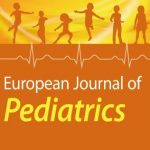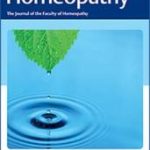Susan M. Yussman, Peggy Auinger, Michael Weitzman and Sheryl A. Ryan
Complementary and alternative medicine use in children and adolescents
J Adol Health, 2002, 30 (2), 105
Purpose: To determine the prevalence, patterns, costs, and predictors of complementary and alternative medicine (CAM) use in a nationally representative sample of children and adolescents.Methods: The 1996 Medical Expenditure Panel Survey (MEPS), a nationally representative household sample, provided data on 7,371 subjects <21 years of age. The primary outcome variable was CAM use as defined by parental report of consulting a CAM provider for health reasons. Predictors included sociodemographic factors such as gender, age, ethnicity, region of the country, family income, health insurance status, and parental CAM use, as well as perceptions and use of conventional medical care. Bivariate analyses using χ2 tests, followed by logistic regression using SUDAAN determined independent factors associated with CAM use.Results: Overall, 2.0% used CAM; of those, only 10.0% disclosed this use to their usual source of care (USC). The most common CAM providers were chiropractors (36.0%), clergy or spiritualists (23.5%), and massage therapists (14.0%). The most common types of therapies were spiritual healing (27.2%) and herbal remedies (16.9%). Of those with CAM use, mean number of visits in the last year to a CAM provider was 8.5, mean dollars spent in one year on CAM visits was $73.40 and on remedies was $13.06. Logistic regression showed the following to be significantly independently associated with greater likelihood of CAM use: female gender (OR = 1.7, 95% CI = 1.12.7), older adolescent age (OR = 2.7, 1.35.8 for 1517 years; OR = 3.2, 1.66.6 for 1821 years), parental CAM use (OR = 47.2, 23.794.0 for both parents; OR = 8.8, 4.516.9 for mother only), and greater number of conventional medical office visits in the last year (OR = 4.4, 2.19.0 for ≥6 visits). For those with a USC, parental dissatisfaction with quality of care was also independently associated (OR = 3.0, 1.08.8). All p values < .05.Conclusion: This study presents the first nationally representative data on CAM use in the pediatric and adolescent population. Two percent of parents report that their children and adolescents consult a CAM provider for health reasons and that they rarely disclose to their USC. Higher utilization of and dissatisfaction with conventional medical care, as well as parental CAM use, are most predictive of children and adolescent CAM use in the United States.





